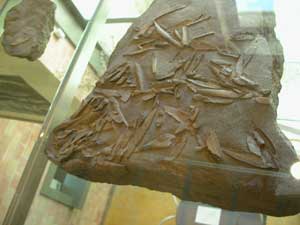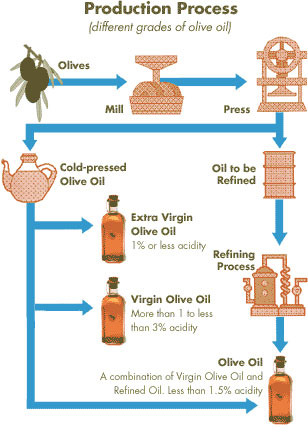The History of Greek Olive oil

50 - 60 thousand-year-old fossilized olive leaves from
Santorini at The Olive & Olive Oil Museum in Sparta.
Greece has been intimately linked with olive oil production, from when it first was produced some five thousand years ago. The first early olive oil producers may have been the Minoans, of Crete. They are believed to have first shipped olive cuttings to North Africa, Asia Minor and mainland Greece.
Each winter olives are hand-picked from olive trees, which are cared for the entire year by olive producers. The olive fruit is collected and crushed in low-temperature presses.
Extra virgin olive oil is the low-in-acidity oil which is produced by the first cold-pressing of the oils. No chemicals are added, only drinking water is used in the processing. All extra virgin olive oil is certified by the Greek Foreign Trade Board (HEPO).
Regular olive oil comes from the oils pressed from the remaining olive pulp. Buyers should be wary of blended olive oils and "lite" olive oils.
The Olive Oil Cold Press Process: Step by Step

(For temperatures up to 26° C)
- Olives are picked by hand.
- They are transported to the olive mill.
- The olives are washed.
- They are crushed and mixed with drinking water.
- The olives are centrifuged to separate pulp and liquids.
- They are centrifuged a second time to separate oil and water.
- The oil is analyzed and classified.
- The oil is filtered once to remove moisture and a second time for particles.
- It is then stored in stainless steel tanks.
- It undergoes another analysis for unwanted substances.
- The product is packaged for sale.
- A third chemical analysis is held, testing at random from the final product.
